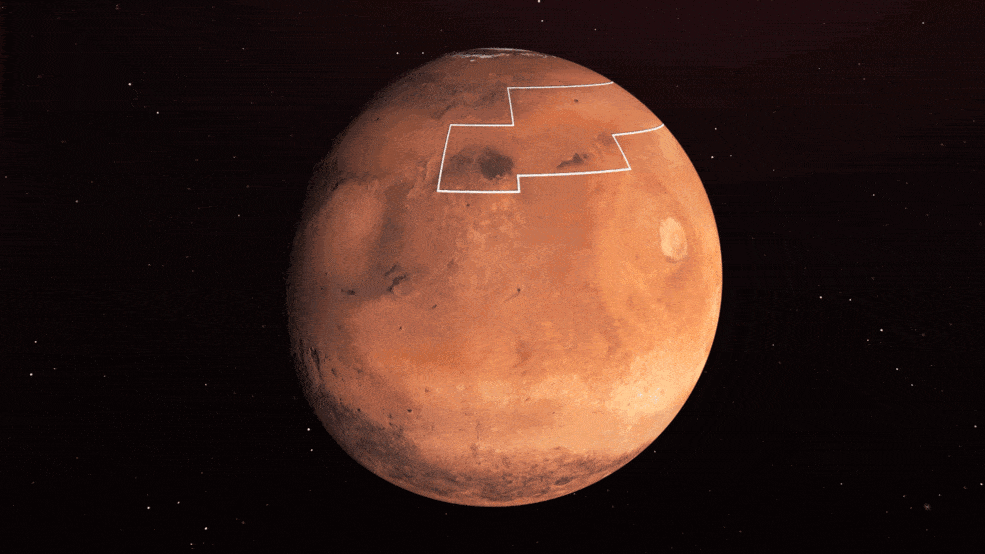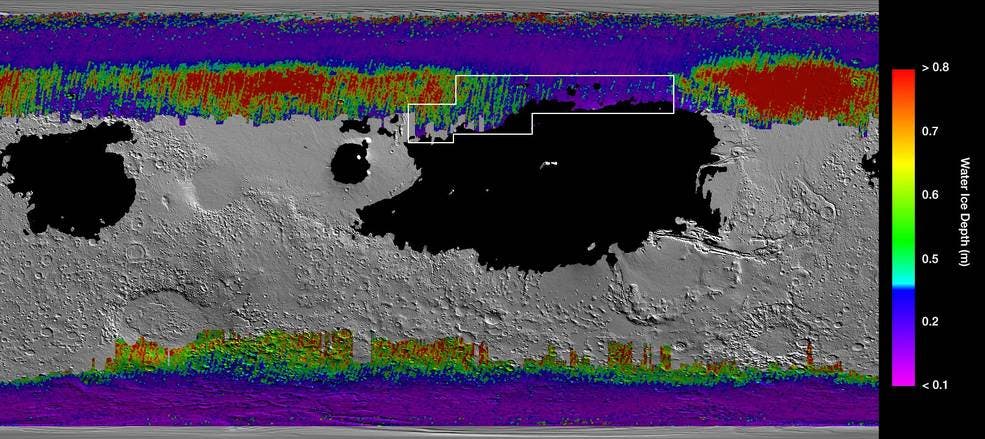If humans will ever colonize Mars, they’ll need to find a fairly accessible source of water. A new map of the Martian surface showing where water ice is believed to be located suggests this won’t be that challenging. In some places, the ice is located as little as 2.5 centimeters below the surface, just one shovel away.

Space missions are frugal by nature since every pound of cargo can cost tens of thousands of dollars to launch — and that’s for shipments to the International Space Station. A manned trip to Mars would be even tighter with resource utilization. This is why any human-crewed mission to Mars would have to involve some on-site resources, such as harvesting ice for drinking water and making rocket fuel.
Using data from the Mars Reconnaissance Orbiter (MRO) and Mars Odyssey orbiter — two spacecraft that are constantly monitoring the Red Planet‘s surface — NASA has compiled a map of relatively accessible ice which could potentially be reached by astronauts on Mars.

In order to detect ice from afar, the researchers relied on heat-sensing instruments aboard the spacecraft. Underground ice changes the temperature of the Martian surface, so by measuring surface temperature and cross-referencing with data, such as known ice reservoirs detected by radar or seen after meteor impacts, it is possible to map out water ice deposits.
“You wouldn’t need a backhoe to dig up this ice. You could use a shovel,” said the paper’s lead author, Sylvain Piqueux of NASA’s Jet Propulsion Laboratory in Pasadena, California. “We’re continuing to collect data on buried ice on Mars, zeroing in on the best places for astronauts to land.”
Due to Mars’ thin atmosphere, liquid water can’t last on the surface of the planet (although sometimes briny water can flow temporarily). But there are important water reserves locked as ice in the underground throughout the planet’s mid-latitudes. For instance, a large portion of Arcadia Planitia, located in the northern hemisphere, shows a large quantity of water ice trapped less than 30 centimeters below the surface. As such, this area could be considered prime real estate for landing astronauts.
In the future, NASA will continue to study subsurface water ice, looking to study how buried ice deposits change across different seasons.
“The more we look for near-surface ice, the more we find,” said MRO Deputy Project Scientist Leslie Tamppari of JPL. “Observing Mars with multiple spacecraft over the course of years continues to provide us with new ways of discovering this ice.”









